| Home | Nature Weekly Index |
24 May 2015 | My Mini Fish Tank |
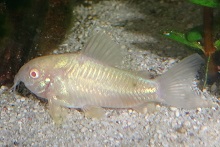 As shared on 22 March, I started a small aquarium in early February with a bag of
guppies. A few weeks later, 3 small white catfish known as Albino Cory Catfish (Corydoras aeneus) were added to the
community as I read somewhere that this fish fed on green algae. Apparently, either the information source was incorrect or the
algae production was simply overwhelming, nothing had changed after the introduction of the catfish. Algae continued to be a
constant irritant on the glass panel of the fish tank.
As shared on 22 March, I started a small aquarium in early February with a bag of
guppies. A few weeks later, 3 small white catfish known as Albino Cory Catfish (Corydoras aeneus) were added to the
community as I read somewhere that this fish fed on green algae. Apparently, either the information source was incorrect or the
algae production was simply overwhelming, nothing had changed after the introduction of the catfish. Algae continued to be a
constant irritant on the glass panel of the fish tank.
Except for the uncontrolled algae that had been terrorising all the aquatic plants in the tank by growing on them, the fishes appeared to be quite happy judging from their size, movement and the brighter body colour displayed compared to the time when they first arrived. The water looked clear from the top though nothing could be seen from the front panel if the algae was not scrubbed away every week. I read about the tips on getting an algae-free tank. However, none of these steps were likely to be taken since I preferred to place the tank near the balcony and keep it as natural as possible. Anyway, it was a small tank and I had gotten into the routine of scrubbing the front panel of the tank with a toothbrush weekly while leaving the other 3 panels untouched. The fishes might just want to have a vegetarian meal from this aquatic vegetable garden occasionally.
Below was a sampling of the guppies --- those that crossed my camera lens. It was different type of challenge in trying to get decent pictures with the camera in front of the tank.
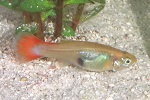

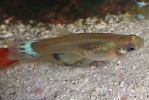
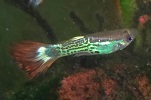

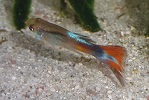
Last week, I found 2 baby guppies hidden among the fine leaves of the Cabomba plant, probably an indication that the fishes were doing well. To prevent the baby guppies from becoming the food of the adult guppies, I transferred them to a small container.
On the water surface, the Water Lettuce (Pistia stratiotes) was spreading fast. During the routine tank maintenance each week, portion of them were removed to ensure that half of the tank surface remained uncluttered. The floating aquatic plant propagate vegetatively via stolons that extended from its base and with a plantlet form at the end of each stolon.

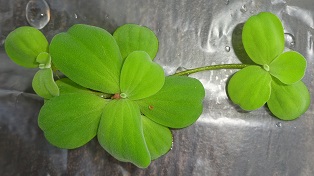
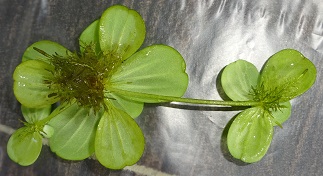
I read about other aquatic creatures such as prawn and snail that might help to control the algae. But since my tank was rather crowded with the guppies, I would wait for some more time before taking other action to deal with the algae.